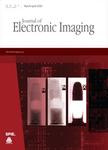版权所有:内蒙古大学图书馆 技术提供:维普资讯• 智图
内蒙古自治区呼和浩特市赛罕区大学西街235号 邮编: 010021

作者机构:Univ Louisville Dept Psychol & Brain Sci Louisville KY 40292 USA Univ Louisville Dept Comp Sci & Engn Louisville KY 40292 USA
出 版 物:《JOURNAL OF ELECTRONIC IMAGING》 (电子成像杂志)
年 卷 期:2005年第14卷第1期
页 面:013003.1-013003.1页
核心收录:
学科分类:0808[工学-电气工程] 1002[医学-临床医学] 0809[工学-电子科学与技术(可授工学、理学学位)] 08[工学] 0702[理学-物理学]
主 题:Image fusion Image enhancement Finite element methods Image resolution Electronic filtering Discrete wavelet transforms Point spread functions Image processing Wavelets Computed tomography
摘 要:New applications currently demand utilizing computed tomography (CT) scout images for diagnostic purposes. However, many CT scout images cannot be used diagnostically due to their poor resolution, particularly in the direction of table movement, and loss of detail when displayed with one view. We present two methods to address these two problems. First, spatial resolution generally can be improved with image restoration techniques. Based on the principles of Wiener filtering and inverse filtering, a modified Wiener filtering approach is presented in the frequency domain. The concept of an equivalent target point spread function is also introduced, which makes the restoration process steerable. Consequently, balancing resolution improvement with noise suppression is facilitated. Relevant experiments compare the image quality with traditional inverse filtering and Wiener filtering. The modified Wiener filtering method has been shown to restore the scout image with higher resolution and lower noise. In addition, CT scout images have a wide dynamic range, from 0 to 105 intensity values. They are difficult to display in full detail with only 8 bits (256 intensities). An image fusion approach is developed to preserve and enhance details of CT scout images. The enhanced image is obtained by high-boosting one fused image from another, both of which are computed by fusing a set of preenhanced subimages which derived from the original, using different fusion rules. Image fusion is performed pixel by pixel by the discrete wavelet transform. Final experiments compare the image quality of the resolution-improved and detail-enhanced image and the noise level with those of the original image. Results show that more details, easily observed by a radiologist, are present in the restored and enhanced image than in the original. 0 2005 SPIE and IS&T.